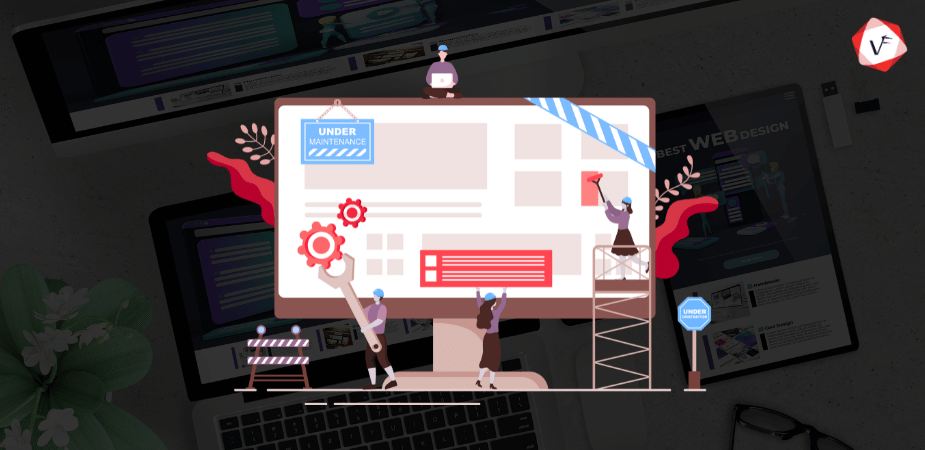A major challenge for modern businesses is keeping up with the needs of their IT infrastructure in order to streamline operations and remain competitive in the digital landscape. It can be complicated and highly resource-intensive to manage an enterprise’s IT infrastructure without dedicated support teams. For businesses without such internal capabilities, remote It infrastructure management firms are a great option. Remote infrastructure management provides businesses with the ability to monitor, manage, and maintain their IT systems and networks from a remote location. In this article, we will explore the concept of remote IT infrastructure management, its benefits, disadvantages, and why it is crucial for businesses in the modern era.
What is Remote Infrastructure Management?
Remote infrastructure management (RIM) refers to the practice of remotely monitoring and managing an organization’s IT infrastructure, including servers, networks, databases, storage systems, and other critical components. With the advent of advanced technologies and secure connectivity options, businesses can leverage remote infrastructure services to ensure seamless operations, proactive maintenance, and rapid issue resolution.
Remote IT infrastructure management has become a vital component of modern business operations. The benefits it offers, such as enhanced efficiency, cost savings, proactive monitoring, and access to expertise, make it a compelling choice for businesses seeking optimized IT infrastructure management. Despite a few disadvantages, such as connectivity dependencies and potential security concerns, the advantages far outweigh the drawbacks.
Benefits of Remote Infrastructure Management
Enhanced Efficiency: Remote IT infrastructure management allows businesses to streamline their operations by centralizing the management of diverse IT systems. This centralization eliminates the need for on-site visits, reducing costs, increasing overall operational efficiency, and fostering faster decision-making processes. With real-time access to critical infrastructure data and analytics, remote infrastructure management empowers businesses to make informed decisions promptly. The ability to remotely monitor and manage systems ensures faster response times, minimizes downtime, and optimizes resource allocation, resulting in enhanced productivity and improved customer satisfaction.
Proactive Monitoring and Issue Resolution: Remote infrastructure services provide businesses with real-time monitoring capabilities, enabling IT professionals to detect and address potential issues before they evolve into critical problems. By continuously monitoring the IT infrastructure, remote management teams can identify early warning signs, performance bottlenecks, and vulnerabilities. This proactive approach allows for timely intervention, preventing system downtime and minimizing disruptions to business operations. With swift issue resolution, remote IT infrastructure management ensures that businesses can maintain optimal performance, deliver uninterrupted services to customers, and safeguard their reputation in the market.
Cost Savings: By opting for remote IT infrastructure management, businesses can significantly reduce their IT operational costs. Remote management eliminates the need for on-site infrastructure, on-site personnel, and associated overhead expenses, such as office space, utilities, and hardware maintenance. Additionally, by outsourcing the management of IT infrastructure to remote service providers and leveraging the expertise of these professionals, businesses can access a skilled and experienced team of professionals without the need for costly in-house hires. This cost-effective approach allows businesses to allocate their resources more efficiently, invest in strategic initiatives, and achieve higher returns on investment.
Scalability and Flexibility: Remote infrastructure management offers businesses the ability to scale their IT resources seamlessly, accommodating evolving needs as companies grow or experience fluctuations in demand. This scalability ensures that businesses can swiftly adjust their infrastructure to meet changing requirements without incurring significant costs or disruptions. Whether it’s scaling up to handle increased workloads or scaling down during slower periods, remote management provides the flexibility needed to optimize performance, maintain cost-effectiveness, and adapt to the dynamic nature of today’s business environment.
Improved Security: Remote IT infrastructure management enables businesses to implement robust security measures, ensuring the confidentiality, integrity, and availability of critical data. With remote management, businesses can benefit from advanced security protocols implemented by service providers. These protocols include regular vulnerability assessments, timely security patches and updates, and adherence to industry best practices. By entrusting their IT infrastructure to remote management providers, businesses can leverage their expertise in cybersecurity to mitigate risks, protect sensitive information, and safeguard against evolving threats in the digital landscape.
Access to Expertise: Remote IT infrastructure management allows businesses to tap into the expertise of highly skilled IT professionals who possess extensive knowledge and experience in managing diverse IT environments. These professionals bring a wealth of expertise in troubleshooting complex issues, implementing best practices, and staying updated with the latest industry trends and technologies. By partnering with remote management providers, businesses gain access to a dedicated team of experts who can provide reliable support, guidance, and strategic insights, ensuring that their IT infrastructure operates optimally and aligns with industry standards and emerging technologies.
Reduced Downtime: With remote infrastructure services, businesses can minimize system downtime through proactive monitoring, rapid troubleshooting, and efficient issue resolution. The ability to remotely diagnose and resolve problems significantly reduces the time required for troubleshooting, thereby minimizing disruptions to business operations. Remote IT infrastructure management enables IT professionals to swiftly identify issues, remotely access systems, and apply immediate fixes without the need for physical intervention. This quick response time and effective problem resolution ensure that businesses can maintain seamless operations, meet customer demands, and avoid costly productivity losses associated with prolonged downtime.
Focus on Core Competencies: By outsourcing IT infrastructure management to remote service providers, businesses can strategically allocate their internal resources and expertise to focus on core business activities. This shift allows companies to concentrate their efforts on activities that directly contribute to their competitive advantage and revenue generation. With the burden of IT infrastructure management lifted, businesses can enhance productivity, streamline processes, and foster a culture of innovation. By leveraging remote infrastructure services, companies can dedicate their time, talent, and resources to driving growth, improving customer experiences, and staying ahead in the dynamic marketplace.
Disadvantages of Remote Infrastructure Management
Dependency on Connectivity: Remote IT infrastructure management relies heavily on stable and secure network connectivity. A reliable and uninterrupted network connection is crucial for effective remote management of IT infrastructure. Any disruptions or issues with network connectivity can hamper the ability to monitor, manage, and maintain the infrastructure efficiently. Businesses must ensure robust network infrastructure, implement redundancy measures, and collaborate with reliable network service providers to minimize the risk of connectivity issues that could potentially impact remote IT infrastructure management operations.
Security Concerns: While remote infrastructure management offers enhanced security measures, businesses must prioritize careful evaluation of the security protocols implemented by service providers. It is imperative to ensure that the chosen provider follows industry best practices to protect sensitive data and systems. Robust measures, such as encryption, secure access controls, and regular security audits, should be in place to mitigate risks. Businesses should also establish clear communication regarding data ownership, confidentiality, and compliance requirements to ensure a strong security posture and maintain trust in the remote IT infrastructure management arrangement.
Limited Physical Presence: The absence of on-site personnel may pose challenges in scenarios where physical intervention or immediate troubleshooting is required. However, most issues can be resolved remotely, and service providers often have the capability to dispatch on-site support if necessary.
Communication and Collaboration: Effective communication and collaboration are crucial for successful remote IT infrastructure management. Due to the remote nature of the service, businesses need to establish efficient communication channels and collaboration tools to ensure smooth coordination between the remote IT team and internal stakeholders.
Data Privacy and Compliance: Depending on the industry and the type of data being managed, businesses must consider data privacy regulations and compliance requirements. It is essential to ensure that the remote infrastructure management provider adheres to relevant data protection standards and compliance frameworks.
Dependency on Service Provider: When outsourcing remote IT infrastructure management, businesses become reliant on the service provider’s expertise, reliability, and availability. It is crucial to select a reputable and experienced provider to ensure high-quality services and seamless support.
Initial Setup and Transition: Shifting from an in-house IT infrastructure management model to a remote one requires careful planning, coordination, and migration of existing systems and data. The initial setup and transition phase may involve some challenges, but with proper planning and support, businesses can overcome them successfully.
Cultural and Time Zone Differences: In cases where the remote infrastructure management provider operates in a different geographical location, businesses may encounter challenges related to cultural differences, language barriers, and managing operations across different time zones. Effective communication and understanding can help mitigate these challenges.
Final Thoughts
In conclusion, embracing remote IT infrastructure management empowers businesses to leverage cutting-edge technologies, enhance operational efficiency, ensure data security, and concentrate on their core competencies. By entrusting the management of their IT infrastructure to experienced professionals, businesses can position themselves for long-term success in today’s rapidly evolving digital landscape. When considering remote IT infrastructure management services, businesses should carefully evaluate potential providers. One such reputable and reliable provider is Vofox. With our extensive experience and expertise in remote IT infrastructure management, Vofox offers tailored solutions to meet the specific needs of businesses. Our focus on security, scalability, and proactive monitoring makes us a suitable choice for businesses looking to optimize their IT operations. Contact us today to know more and get started.





